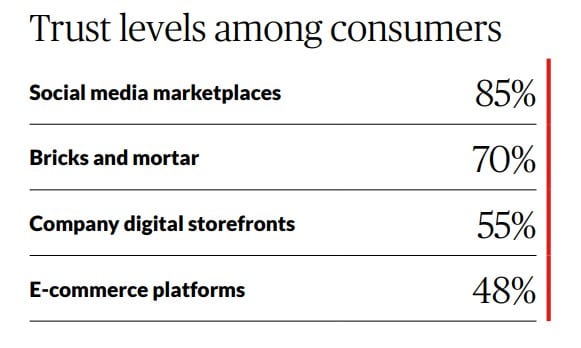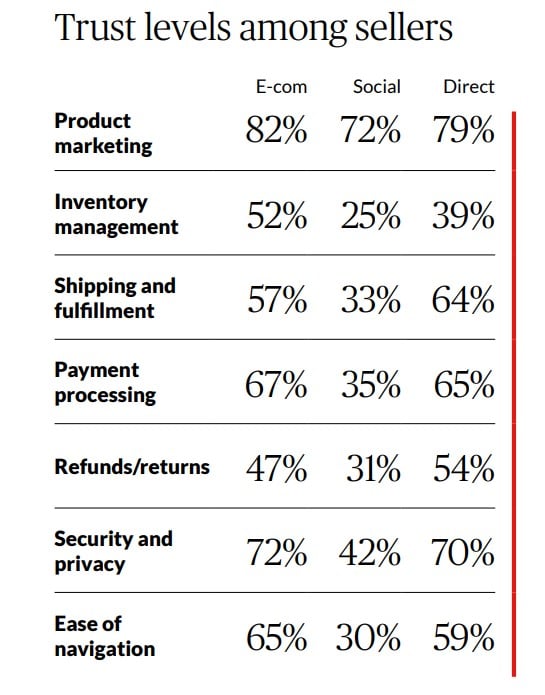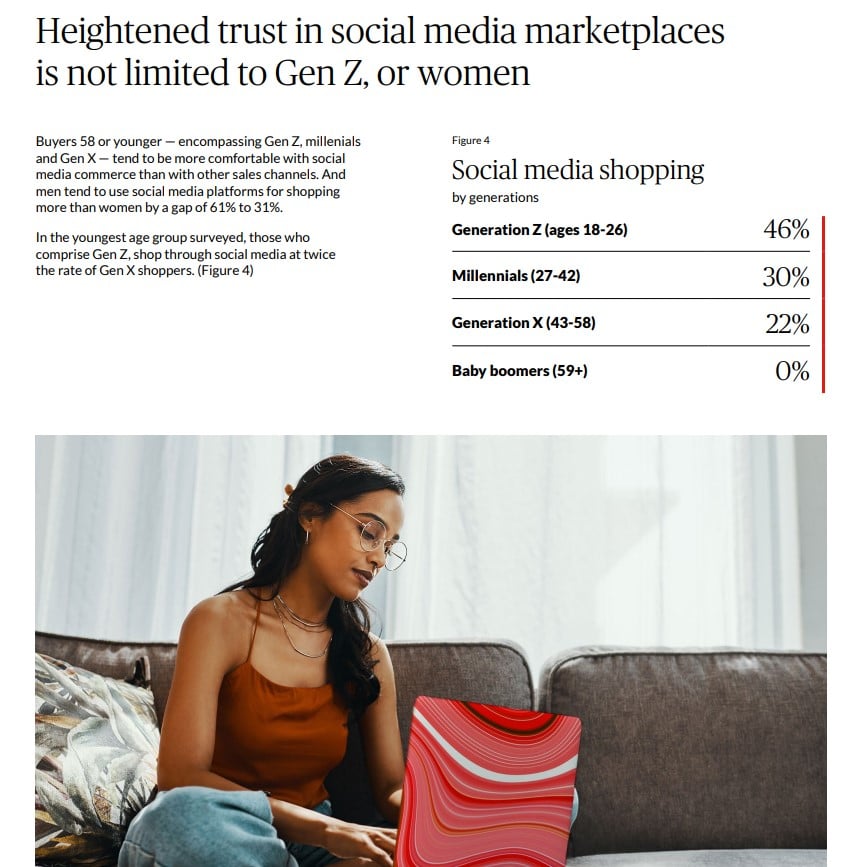Shoppers gonna shop—even though concerns like digital security, breach risks, privacy vulnerability and identity theft make digital commerce a landmine-filled landscape, business is booming, and consumers find social media e-commerce sites to be the most reliable. But new research from insurance giant Chubb reveals that the brands and businesses whose transactions are mostly digital are concerned that those social media platforms aren’t very trustworthy—and their imminent mishandlings will leave the sellers with reputational black eyes.

The firm’s new report, Crossing the e-Commerce Trust Divide, based on a survey of buyers and sellers conducted by iResearch Services, finds that this trust gap is most evident among the growing segment of shoppers who have embraced social media commerce sites, with 85 percent saying they trust those marketplaces. But a significant majority of e-sellers don’t trust social media commerce sites when it comes to managing inventory (75 percent), handling refunds and returns (69 percent), shipping and fulfillment (67 percent), payment processing (65 percent), and security and privacy (58 percent).
Among consumers who shop online through both e-commerce and social media platforms, three out of four report they have experienced financial fraud, and more than half (55 percent) have had payments lost due to glitches. More than two in five (42 percent) say they frequently receive damaged goods.

“Whether it’s on social media or on e-commerce platforms, the customer journey must be simple, easy and give the consumer confidence—their trust is fragile,” said Amy McNeece, senior vice president of Digital Consumer Partnerships for Chubb in North America, in a news release.”Delivery issues, damaged products and online scams can all shatter consumer trust in an instant, and customer loyalty is critical in the age of digital commerce.”
The study also shows regional differences, with consumers in Latin America purchasing from e-commerce platforms more frequently than those in North America, Europe and Asia. “Latin America’s fast-paced online shopping reveals a savvy digital consumer,” said Gabriel Lazaro, executive vice president and head of digital for Chubb’s international general insurance business, in the release. “This has been driven by mobile and social media leapfrog behaviors during the last decade. The emerging middle-class consumer has access, thanks to e-commerce platforms, to a wider and broader range of services than through traditional channels.”

Key findings:
Heightened trust in social media marketplaces is not limited to Gen Z, or women
The generations born after the Baby Boomers—Gen Z, Millennials and Gen X—tend to be more comfortable with social media commerce than with other sales channels. Men tend to use social media platforms for shopping more than women by a gap of 61 percent to 31 percent. Gen Z, the youngest age group surveyed, shop through social media at twice the rate of Gen X shoppers.
Latin American consumers are the most frequent users of online stores among the regions surveyed
One in four (25 percent) Latin American respondents shop online several times a week—twice the rate of consumers in other parts of the world. In addition, nearly three-quarters (74 percent) visit and purchase from e-commerce platforms at least several times a month compared to 62 percent of North American, 59 percent of European and 56 percent of Asian respondents.
Nothing about e-commerce is more important to consumers than payment security
Nearly eight in 10 consumers globally say the security of the payment platform is their top concern.
Consumers say having insurance would increase their confidence in making online purchases—but they are sensitive to price
A majority of consumers say having insurance would increase their confidence in making online purchases. Seven out of 10 consumers would like to have coverage, mainly to protect purchases of electronics, home appliances, exercise equipment and clothing. To protect those purchases, a majority say they would be willing to add one percent of the price of the items they buy.
There is one area where consumers and e-sellers are aligned: they both want a more secure end-to-end shopping experience
The availability of online insurance can contribute to building and maintaining trust,” said McNeece. “That’s particularly true for smaller businesses that need to think about how to build and protect their brands and get repeat customers.”
Download the full report here.
The survey, commissioned by Chubb, was conducted by iResearch in November 2023 among 500 consumers who purchase through online channels, including e-commerce platforms, social media marketplaces and digital storefronts, and 525 e-sellers who sell through these online channels. The survey, conducted online and compiled by iResearch, consisted of consumers and e-sellers from North America, Europe, Asia, and Latin America. Thirty percent of consumers in the survey are based in Europe, 30 percent in North America, 25 percent in Asia-Pacific, and 15 percent from Latin America. The survey also represents a global range of e-sellers: 32 percent are based in North America, 31 percent from Europe, 20 percent from Asia Pacific region, and 18 percent come from Latin America.








